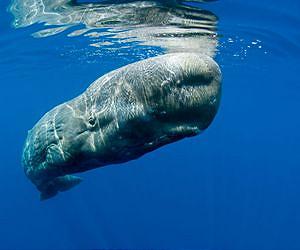
The other night, I finally got around to watching Ron Howard’s “In the Heart of the Sea”. There was positive anticipation of giant whales and ocean going sailing ships, based upon previous knowledge of the book, and the deep belief it is almost impossible to make a bad movies about whales or dinosaurs. My guess is that Howard skipped reading Owen Chase’s The Wreck of the Whaleship “Essex” and went directly to a quick screening of Sharknado… I, II, III, or IV.
It is puzzling how an intense story of giant mammals, deep moral conflict, corrupt capitalism and adventures on the high seas could somehow become a Marvel Avenger’s derivative. The special effects were cartoonish; the white whale expressed emotion by varying the speed and acceleration curve of its tail flip. There were no crusty whalers with tales of the sea, no saucy barmaids serving warm ale; just boat loads of myopic, monolithic, and intellectually stunted male models getting their ass whipped by whale that displayed no wrath of a vengeful God. For Pete’s sake, there was even a moment when First Mate Zoolander Von Drupersnickles bonds with the whale… Mano a Mammal.
The viewing left me distraught and in search of my childhood impressions of the white whale and human intersection that were the creation of Owen Chase and Melville. I always thought cabin boy Nickerson’s book showing up in the 1980’s was too much like the Ian Fleming Bond novels that were “discovered” after his death, including The Man With the Golden Gun, so it never made my reading list. In any event, I decided to reread The Wreck of the Whaleship Essex, Moby Dick and The Teacup Whale, all books of my childhood, to regain my original perspective. Unfortunately, while searching for a copy of the 1934 The Teacup Whale, I found that author Lydia Gibson had been a rabid communist, radicalized by her active role in the women’s suffrage movement, which destroyed my memories of being age three and of the first book I ever read.
What does this have to do with firearms and handloading? Not a thing, other than a caution that a journey beginning with great expectations does not always end with the same. In this case, we began with a truly epic rifle and which may have eventually gotten lost in my writing. On that note….
Bullets, bull…lets, balas, Aufzählungszeichen
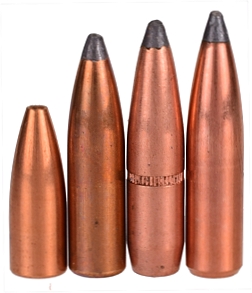
Four bullets were selected for the 257 Weatherby handloads. None are made of Kryptonite, or turned on a Talus lathe, or cast by Benvenuto Cellini. They are very much the same type of basic bullets, copper jacket around a lead core, that I have been pulling out of game carcasses for more than half a century.
| Brand | Type | Bullet Weight |
Bullet Length |
Potential COL |
Selected COL |
| Sierra Varminter | SPFB | 75 | 0.753 | 3.300 | 3.025 |
| Sierra Pro-Hunter | SPFB | 117 | 1.076 | 3.487 | 3.250 |
| Hornady | SPBT | 117 | 1.135 | 3.550 | 3.215 |
| Nosler Partition | SPBT | 120 | 1.176 | 3.565 | 3.240 |
A note on Potential COL and Selected COL headings – Potential represents how far out the specific bullet can be positioned before contacting the rifling leade; the transition from the groove diameter throat to the onset of rifling. In all cases, this length exceeds the maximum cartridge overall length and provides inadequate seating. In fact, the 75 grain Sierra measurement only reflects where the bullet at the case mouth. The selected COL reflects adequate seating. All are within mainstream reloading manual stated 3.250″ maximum COL limits, but some slightly exceed new SAAMI maximum COL limits for the 257 Weatherby cartridge. All combinations were verified to have adequate clearance with a COL Gage.
Handload Data and results
The handloading exercise was focused on accuracy, not velocity. Still, velocity is at or near typical maximum loads. Re 33 is generally at its best with .30 caliber and above overbore cartridges, but the accuracy was decent, velocity wasn’t bad and there were no symptoms of high pressure in primer flattening or case head marking. I am not sure if we are in a “Read the signs of pressure” or “You can’t read signs of pressure” cycle, so I will make the assertion there is useful information to gathered by looking at spent casing and you can either nod affirmatively or thumb your nose at the suggestion.
 |
Warning: Bullet selections are specific, and loads are not valid with substitutions of different bullets of the same weight. Variations in bullet material and length will alter net case capacity, pressure and velocity results. Primer selection is specific and primer types are not interchangeable. These data represents maximum loads in our firearms and test equipment and may easily be excessive in other applications. All loads should be reduced by 5%, and developed following safe handloading practices as represented in established reloading manuals produced by component manufacturers. Presentation of these loads does not constitute a solicitation for their use, nor a recommendation.
|
||||||||||||||||||||||||||||||||||||||||||||||||||||||||||||||||||||||||||||||||||||||||||||||||||||||||||||||||||||||||||||||||||||
|
|
|||||||||||||||||||||||||||||||||||||||||||||||||||||||||||||||||||||||||||||||||||||||||||||||||||||||||||||||||||||||||||||||||||||
Reading the tea leaves…
The temperature soared to a lofty 38ºF, skies were crystal clear so there was nothing left to do but put up some targets and light up the range. The Ruger No.1 in 257 Weatherby has a report that won’t get lost amid pedestrian gun fire at the range or in the field, as in discharge on the far side of the mountain, “Hey! That must be Chuck and his Ruger”. Recoil, on the other hand, is moderate… 30-06 like and over quickly. The well mannered Ruger pops back in a straight line with no appreciable muzzle rise and no thump on the cheekbone.
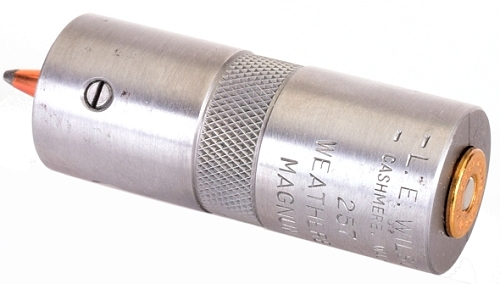
Bolt action 257 Weatherby Magnums sometimes stretch a bit and do funny things to case dimensions, particularly elongating shoulder controlled headspace and expanding the case outward just forward of the belt. So I took my pockets full of brass from the Ruger No.1 and an L.E. Wilson Adjustable Case Gage and made some comparisons. Normally, a Hornady headspace gage would be used, but Hornady doe not offer a premade bushing for the double radius shoulder Weatherby. Customers can purchase blank bushings and customer fit them to a cartridge, we do it for wildcat cartridges, but the Wilson gage is easier to use and probably more accurate.
| Case Identification | Overall Length “ |
Body at Belt “ |
Relative |
| Factory Cartridge | 2.545 | 0.508 | 0.000 |
| #1 | 2.537 | 0.514 | 0.011 |
| #2 | 2.539 | 0.514 | 0.014 |
| #3 | 2.541 | 0.514 | 0.012 |
| #4 | 2.541 | 0.514 | 0.014 |
| Resized Case | 2.544 | 0.511 | 0.014 |
| #5 | 2.544 | 0.514 | -0.002 |
| #6 | 2.541 | 0.513 | -0.002 |
| #7 | 2.540 | 0.514 | -0.005 |
| #8 | 2.542 | 0.514 | 0.000 |
| #9 | 2.540 | 0.514 | 0.000 |
| #10 | 2.541 | 0.514 | 0.000 |
| #11 | 2.540 | 0.514 | -0.001 |
| #12 | 2.543 | 0.514 | 0.000 |
The story on the table is that factory ammunition is well undersize and expands to fill the chamber is a relatively uniform fashion. Full length resizing adjusted to a fired case keeps headspace near chamber dimension and changes very little when fired for the second time. That is a sign of a stout and stabile chamber. Of course, 257 Weatherby headspace, like most belted magnums, is established where the belt contacts the chamber and measures back to the face of the casehead. That said, reloading and resizing to the belt would overwork the brass and cause early failure.
Optics – Burris Veracity
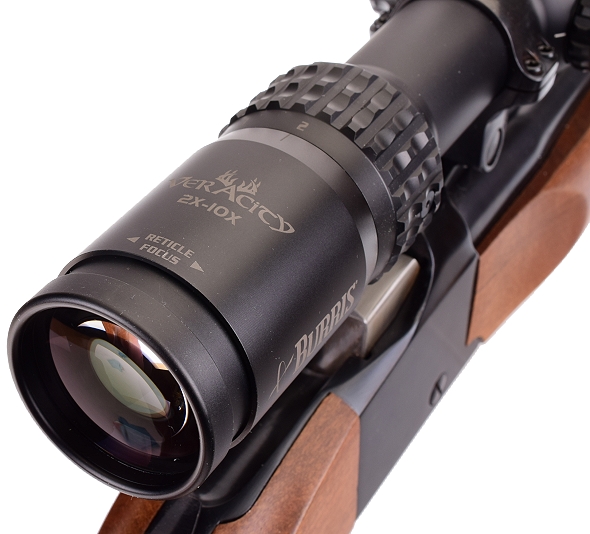
The Burris Veracity 2-10x42mm brought too much to the party to be only briefly mentioned so it will be covered in detail within a dedicated article. A scope isn’t a casual selection for a high powered rifle as it is the visualization of its abilities; strikes on a target or the vivid view of the conclusion of a successful hunt. The Burris Veracity was intuitive in use, bright in image and predictable in adjustment and zero. This one was mounted a little high with medium rings to facilitate shooting off of a rest, but it could have been dropped down to low rings with plenty of clearance above the barrel and breech for loading and ejection.
The Ruger No.1 in a word… Neato!
Part I opened with reference to the number of Ruger No.1 rifles we’ve had in the shop and the numbers of ways we have employed them at work during handload development, pressure testing and wildcat cartridge development. The reality is that we are a business and invest in what will offer the greatest return. Used for hunting, handload and wildcat development, the Ruger No.1 has been rock steady reliable. More than the utility aspect, holding a Ruger No.1 feels like history, so I’d guess Bill Ruger achieved his goal of creating a modern classic.
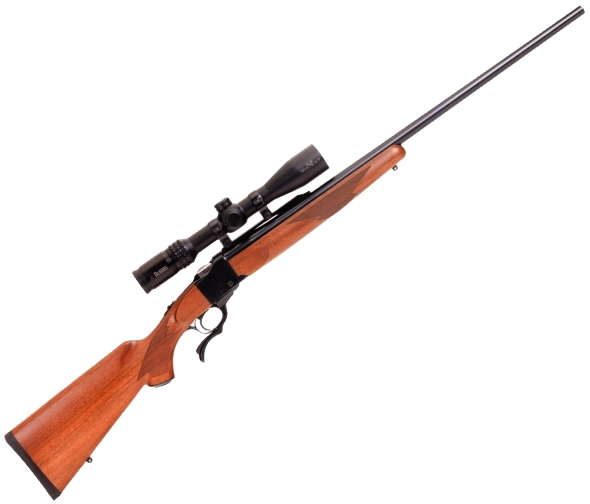

Email Notification